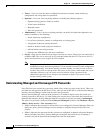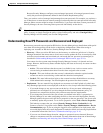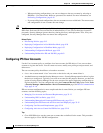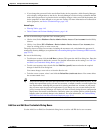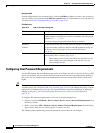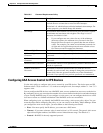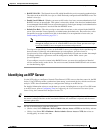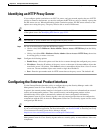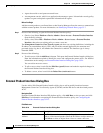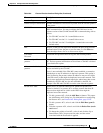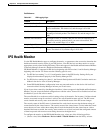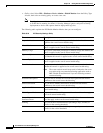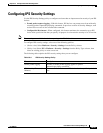
35-22
User Guide for Cisco Security Manager 4.4
OL-28826-01
Chapter 35 Getting Started with IPS Configuration
Identifying DNS Servers
Step 2 In the NTP Server IP Address field, enter the IP address of the NTP server. You can also enter the name
of a network/host object that identifies the single host address of the server, or click Select to select the
object from a list or to create a new one.
Step 3 If the NTP server does not require authentication, deselect the Authenticated NTP checkbox.
If the NTP server requires authentication, configure the following options:
• Authenticated NTP—Select this option to enable authenticated connections.
• Key, Confirm—The key value of the NTP server. The key is an MD5 type of key (either numeric or
character); it is the key that was used to set up the NTP server.
• Key ID—The key ID value of the NTP server, a numeric value between 1 and 65535.
Tip The key and key ID are configured on the NTP server; you must obtain them from the NTP server
configuration.
Identifying DNS Servers
If you configure global correlation on an IPS 7.0+ sensor, the sensor must be able to resolve domain
names to successfully connect to the update server when downloading global correlation updates. Use
the DNS policy to identify the Domain Name System (DNS) servers that the sensor can use to resolve
domain names to IP addresses.
Tip If your network requires HTTP proxies when making Internet connections, configure the HTTP Proxy
policy instead of the DNS policy. See Identifying an HTTP Proxy Server, page 35-23.
Note The AIP-SSC-5 service module does not support DNS servers.
Step 1 Do one of the following to open the HTTP Proxy policy:
• (Device view) Select Platform > Device Admin > Server Access > DNS from the Policy selector.
• (Policy view) Select IPS > Platform > Device Admin > Server Access > DNS, then select an
existing policy or create a new one.
Step 2 Specify the IP addresses of up to three DNS servers in the Primary, Secondary, and Tertiary Address
fields. The sensor uses the servers in the order listed; if one server does not respond, the next server is
contacted.
You can enter an IP address or the name of a network/host object that contains a server address. Click
Select to select a network/host object from a list or to create a new one. The network/host object must
specify a single host address.



